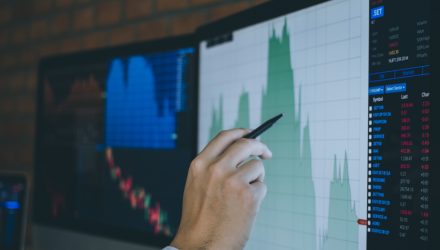When most investors hear the word “yield” they immediately think about dividends. Things like stock buybacks and debt paydown typically don’t come to mind. But those are also yields, or ways companies can return cash to shareholders. When dividends, buybacks and debt paydown are combined, they give us something called shareholder yield. Calculating and sorting stocks by shareholder yield is a systematic way to identify companies that are returning cash to shareholders via these three capital allocation activities.
In this article, I’ll take a look at the three components of shareholder yield as well as how selecting stocks using this metric has performed over time. I’ll also briefly look at how shareholder yield can be combined with other fundamental investment criteria to aid in stock selection.
I’ve also recorded a supplemental video below highlighting some of the models on Validea that utilize shareholder yield. Please read the full article and come back to the video if you are unsure what shareholder is and why it can be helpful in analyzing companies returning cash to shareholders.
Roots of Shareholder Yield
Shareholder yield can be traced back to a 2005 research paper written by William Priest of Epoch Investment Partners. In the paper, “The Case for Shareholder Yield: As a dominant driver of future equity returns“. Priest makes the case that shareholder yield “will become one of the two dominant drivers of future equity returns.” The paper was written roughly 14 years ago, and Priest’s thesis has been directionally accurate, as stock buybacks have continued to ratchet higher, and companies with strong free cash flow generation have performed very well over the past decade.
Here is a look at the individual components:
#1 – Dividend Yield
If a company pays $2 a year in dividends and its stock trades at $100 a share, its dividend yield is 2%, and the investor receives this payment as long as the company continues to pay a dividend. If the stock falls to $50, the dividend yield increases to 4%. Many investors value dividends, and when you look at the overall long term return of the stock market over the past 90 years, the dividend yield is a significant part of that overall return.
The critique with dividends is they’re not the most tax efficient way to return money to shareholders in that they are double-taxed. The company distributing the dividend has paid tax before the dividend is distributed and investors who receive dividends in non-qualified investment accounts will also need to treat the dividends as income.
Warren Buffett’s Berkshire Hathaway doesn’t pay dividends since he believes he can allocate the firm’s capital over time to more productive assets (i.e. public stocks and buying companies outright). Still, dividends are an important component of equity returns, and if a company doesn’t have a productive use for their cash, then giving the money back to shareholders is a sound capital allocation decision.
The dividend yield is the first input we need in order to calculate shareholder yield.
#2 – Buyback Yield
Buyback yield is the second component of shareholder yield. It looks at the value of shares that have been repurchased over a given period (typically the past year) and divides it by market capitalization. If shares have been bought back on a net basis, you have a positive buyback yield and if they have been issued on a net basis, you have a negative buyback yield.
